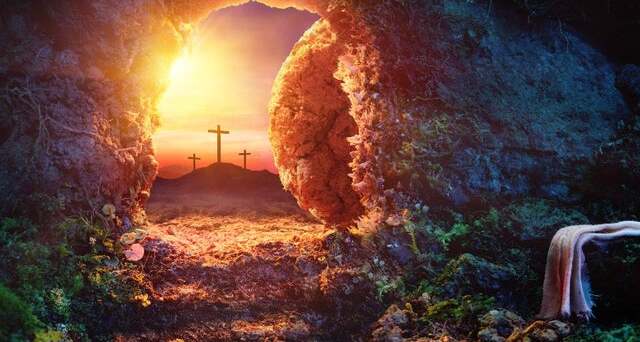Easter Sunday, is the climax of the holiest holiday on the Christian calendar, that is celebrated by millions of Jesus-followers around the world.
Easter commemorates the resurrection of Jesus after he was crucified, buried in a tomb and raised from the dead on the third day. The history of Jesus’ life, death and resurrection is one of the most well-known stories across the world and recognized as a celebration day after a penitent Lenten season.
Yet with all the modern fusions of Easter eggs, chocolate bunnies and decorated baskets, it’s easy to forget the origins of the most sacred event in Christendom.
Here are 10 interesting facts you might not know about the origins of Easter:
1. Easter is also called Pascha and is preceded by Lent, a 40-day period of fasting and penance. An early church priest, Irenaus of Lyons, wrote of Lent in the early days of the church, around 130 AD, but at that time Lent only was observed for three days, rather than 40.
2. Holy Week, the week before Easter Sunday, includes the “Easter Triduum,” a period of three days, including Maundy Thursday, which commemorates the Last Supper; Good Friday, commemorating the crucifixion and death of Jesus; and Holy Saturday, the day Jesus’ body lay in the tomb.
3. The Sanhedrin, the council who decided the fate of Jesus’ death on the cross, is composed of Jewish council members. On the day he was arrested, Jesus went before the council and remained relatively quiet about his defense. He is condemned to death when he does not deny that he is the Son of God. That’s when Jesus is taken to Pontius Pilate, a Roman governor of Judea.
4. When Jesus finally died after many long hours of suffering, his body was removed from the crucifix. He was placed in a tomb belonging to Joseph of Arimathea, a wealthy Jewish man, member of the Sanhedrin and secret follower of Jesus. He was also Jesus’ great-uncle and his mother Mary’s uncle.
5. When Joseph of Arimathea learned of Jesus’ death, he went directly to Pontius Pilate and requested permission to take Jesus’ body and bury it properly, according to Jewish tradition as a sign of respect.
6. Joseph and Nicodemus wrapped Jesus’ body in cloth, added about 100 pounds of myrrh and aloes and buried him in a tomb Joseph purchased for himself. It had never been lain in. Joseph later became the first person to bring Christianity to Britain and built its first church. He was also venerated as a saint in the Roman Catholic, Eastern Orthodox and some Protestant churches.
7. Some Christians believe Joseph of Arimathea fulfilled the prophecy of Isaiah 53:9, which states, “Then they made a grave with the wicked, and with the rich people in his death, although he had committed no violence, nor was there any deceit in his mouth.”
8. After Jesus’ resurrection, Jesus appeared to more than 500 people on 12 separate occasions. He also appeared to those who didn’t believe that he was the Son of God. He told those he encountered to touch him and showed them his scars from the crucifixion, according to the gospels. When they touched him, they worshiped and rejoiced, and some went to Jerusalem to tell others what they saw.
9. The Passover Seder is a Jewish celebration comprised of ceremonious food and beverage items, recited prayers, lighting of candles and ritualistic remembrances of the historical suffering of Jewish people. After Jesus’ death, a mysterious addition was added to the Seder, the afikomen piece of Matzah bread (afikomen is a Greek word meaning “the coming one” in reference to the messiah) and the Matzah tosh, or pouch for the Matzah, unleavened bread. In the pouch where three flat pieces of Matzah bread are placed during the Seder, the middle one is taken out of the pouch during the meal, broken and wrapped in cloth and hidden in the home until the end, where it is brought back into view and broken and distributed for all to eat. The afikomen ceremony is prominent in modern Seders, yet there is still much mystery behind its origin and meaning.
10. Easter is a movable holiday depending on which calendar the church observes, either the Julian or Gregorian calendars. Therefore, Easter is often celebrated on different days in the Western and Eastern Orthodox churches. In 2014 and 2017, Easter was celebrated on the same date.
Happy Easter Celebrations to y’all
SOURCES: History.com; Holy Bible, Britannica.com; Goarch.org; Catholic.org
If you would like your article/opinion to be published on Uganda’s most authoritative news platform, send your submission on: [email protected]. You can also follow DailyExpress on WhatsApp and on Twitter (X) for realtime updates.



